

Max Davies
2026 GWM Haval Jolion review
6 Minutes Ago
Mitsubishi has always focused on solid performance and value from the Triton ute. The new model is solid, but the value equation has changed.
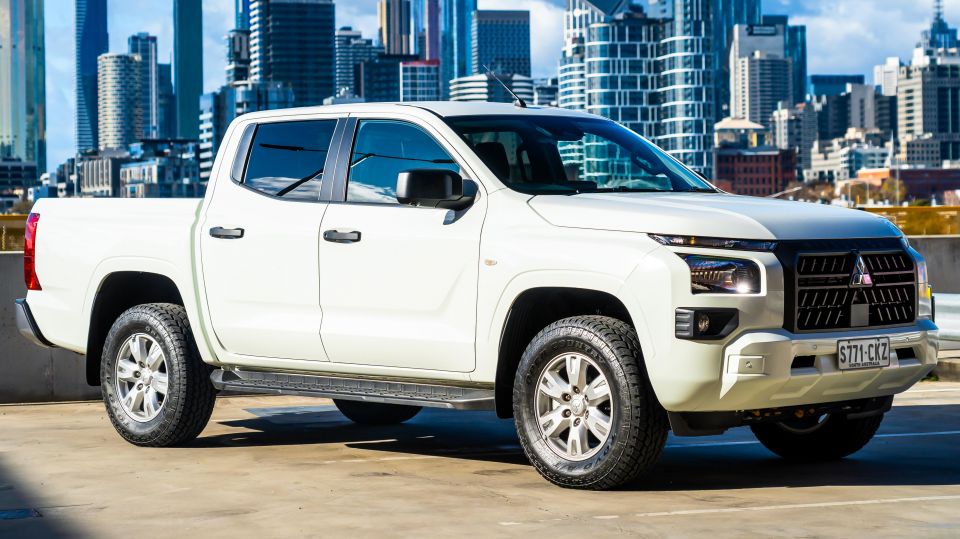
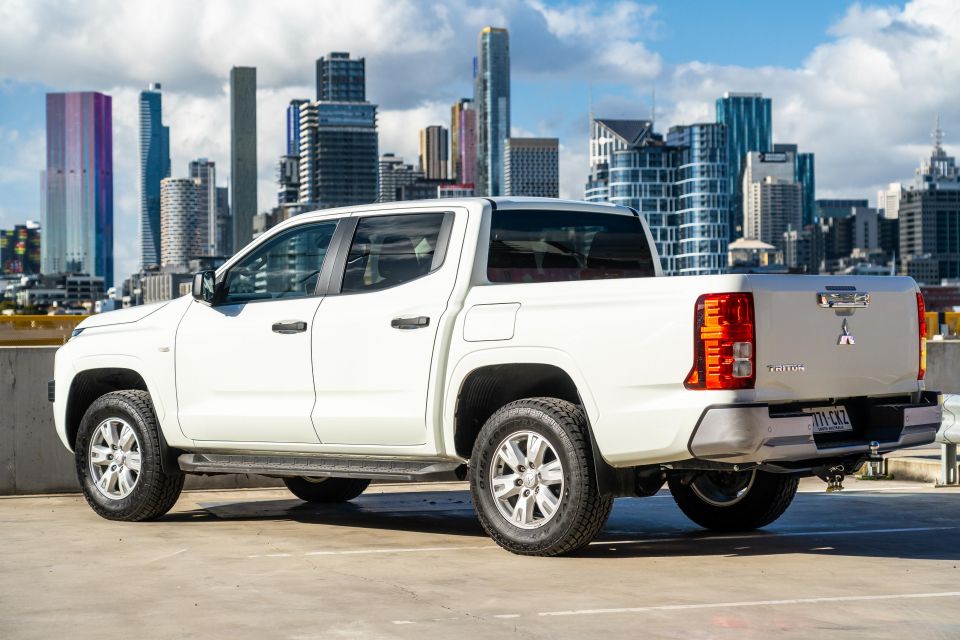

Quickly see how this car stacks up against its competition. Select any benchmark to see more details.
Where expert car reviews meet expert car buying – CarExpert gives you trusted advice, personalised service and real savings on your next new car.
It’s been a long time coming, but there’s a new Mitsubishi Triton in town.

We’ve already sampled the new hero models, which come loaded with luxury add-ons and tough looks designed to woo buyers who want to dominate the school run, and charge through the bush with reckless abandon.
But what about the bottom end of the range?
Although it’s not quite the absolute base model, the 2024 Mitsubishi Triton GLX+ on test here eschews unnecessary luxuries. It has black grilles and mirrors, small wheels, cloth interior trim, and an old-school key you need to twist.
In other words, there’s nowhere to hide. Are the fundamentals in the new Triton solid?
The GLX+ is in the middle of the Triton range, which is much smaller than that of a Ford Ranger or Toyota HiLux.

| Model Variant | $RRP |
|---|---|
| 2024 Mitsubishi Triton GLX 4×2 dual-cab ute | $43,690 |
| 2024 Mitsubishi Triton GLX+ 4×4 club-cab ute | $50,340 |
| 2024 Mitsubishi Triton GLX 4×4 dual-cab ute | $50,490 |
| 2024 Mitsubishi Triton GLX+ 4×4 dual-cab ute | $53,290 |
| 2024 Mitsubishi Triton GLS 4×4 dual-cab ute | $59,090 |
| 2024 Mitsubishi Triton GSR 4×4 dual-cab ute | $63,840 |
To see how the Mitsubishi Triton lines up against the competition, check out our comparison tool.
Buy your new car without the stress. It's fast, simple and completely free.

Great service from Travis and team, second time I have used this business would not hesitate to recommend them to anyone
Craig C.
Purchased a Ford Ranger in Sunshine Coast, QLD
CarExpert helped Craig save thousands on his Ford Ranger, now let us save you on your next new car.
Find a dealEven in GLX+ guise, the Triton has taken a huge step forward from its creaky predecessor.
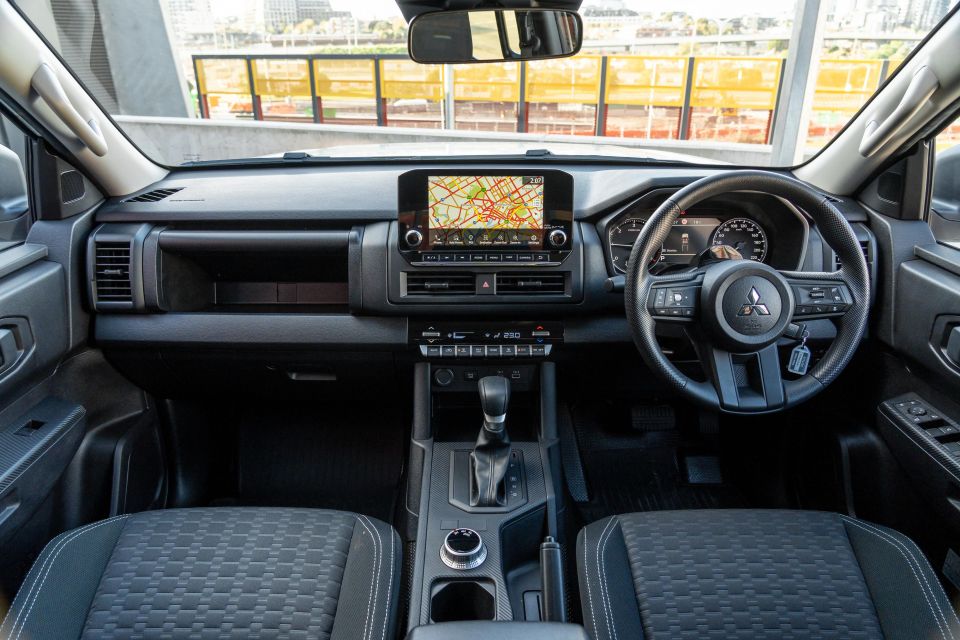
From the more accomodating seats to the improved technology, this is finally a ute fit for 2024 instead of 2014.
The fundamentals are solid. The view over the bonnet is commanding, and the manually adjusted seats allow tall drivers to get into much better positions than in the cramped old car.
Having a proper bank of climate control buttons is a win, and there’s plenty of storage for your morning iced coffee run.
Under the dash is a slot that’s perfect for your iPhone and wallet, and the central bin is deep enough to take all your road trip snacks – or documents if you’re a tradie on the move.
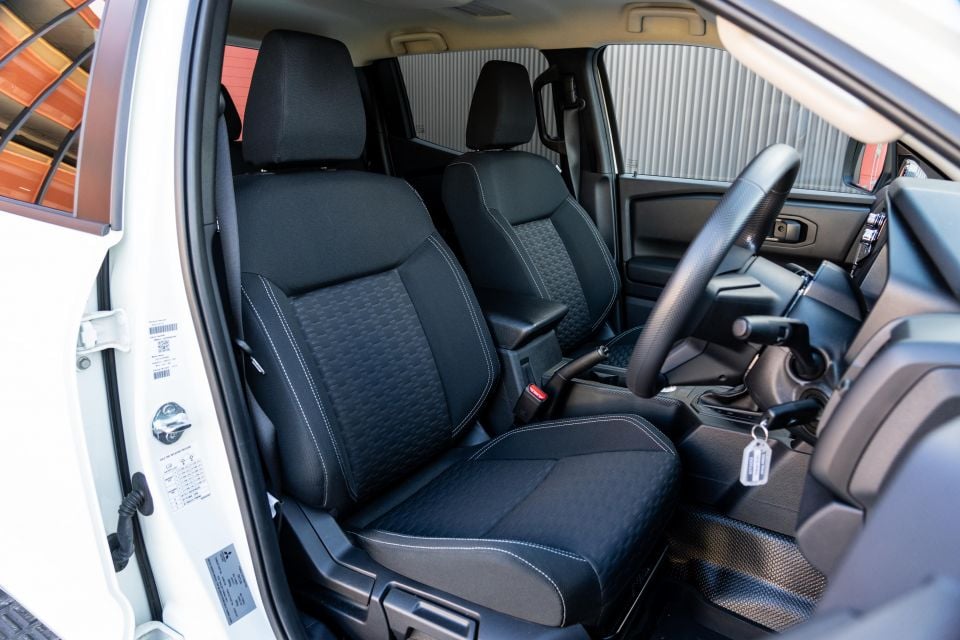
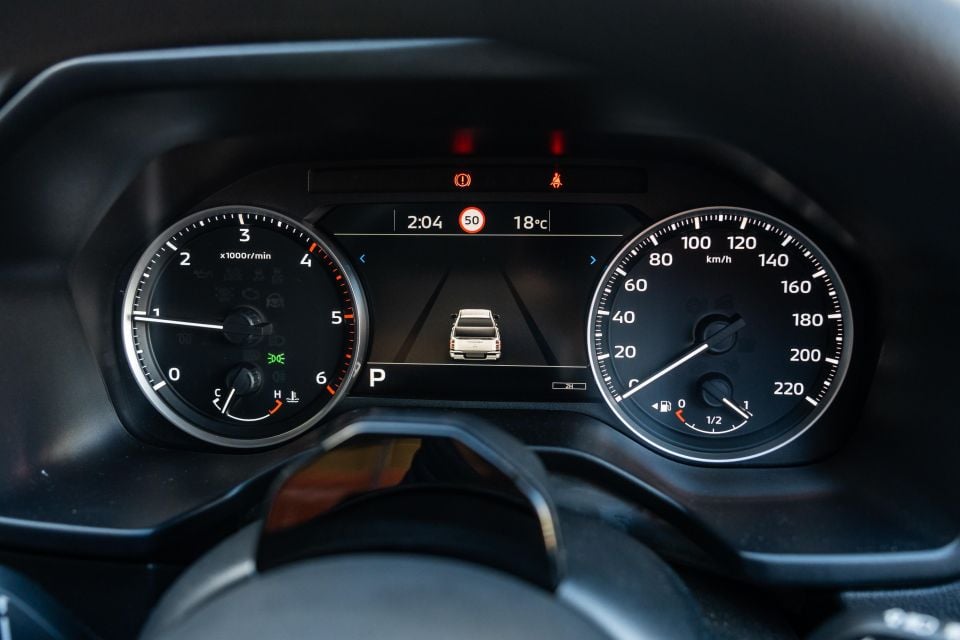
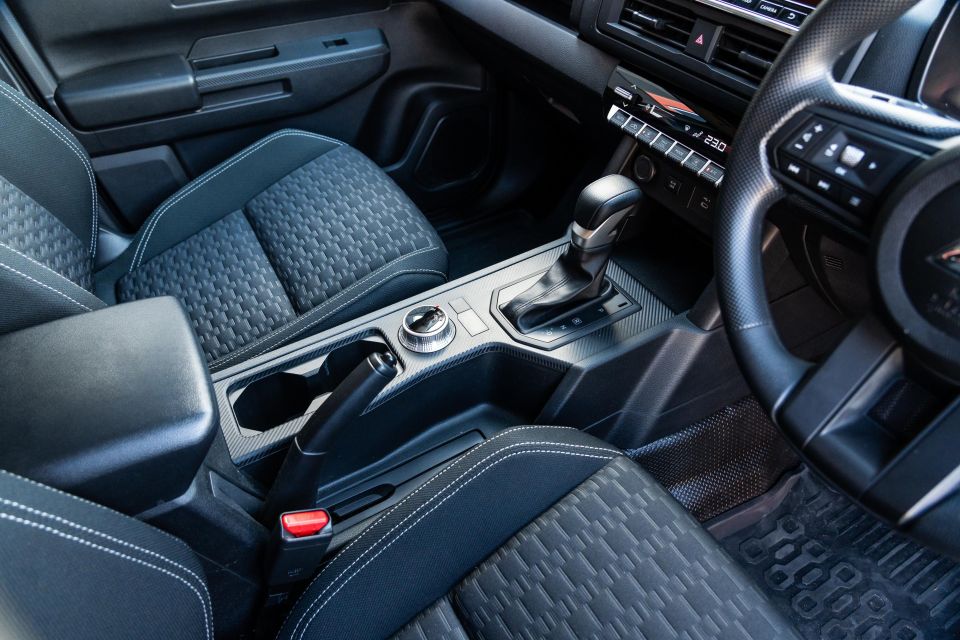
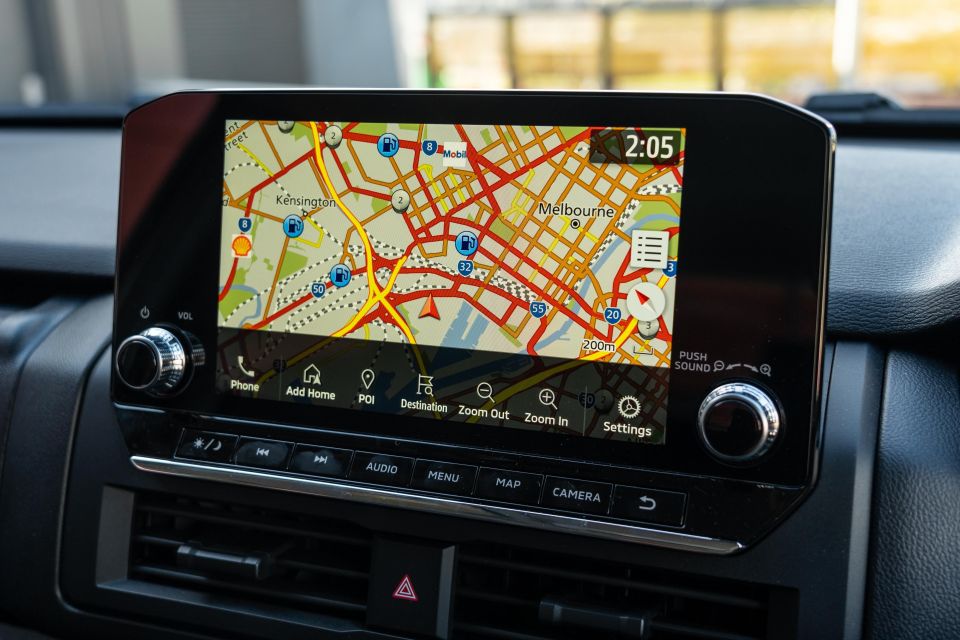
There’s no flip-up lid for the secondary glovebox, but you can still store stuff in there provided you’re not worried about people with prying eyes being able to see in.
The base cloth trim isn’t fancy, but it’s nice and warm on cold Melbourne mornings. It also feels hard wearing, which is critical on a work truck that’ll be ridden hard and put away wet.
It’s a shame Mitsubishi has stuck with “old-ute” thinking in some places here. The plastic steering wheel is just plain nasty in a car worth more than $50,000 before on-road costs, and keyless entry is so widespread it really should just feature here.
This isn’t a particularly cheap ute when you consider the leather-lined, screen-heavy GWM Cannon Alpha starts at $52k drive-away. Cheap doesn’t need to mean nasty anymore, but that message hasn’t yet reached Mitsubishi head office in Japan.
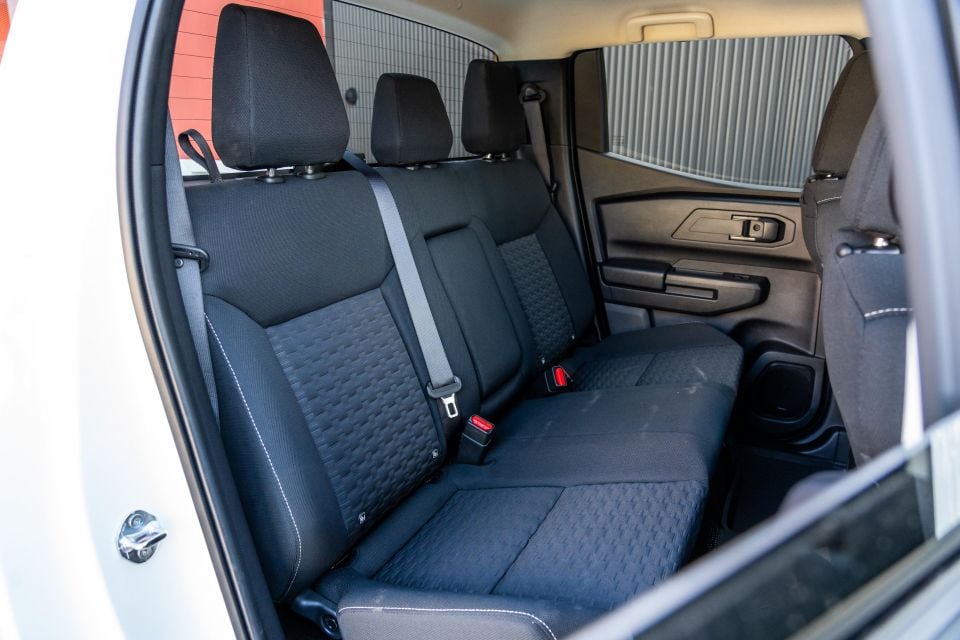
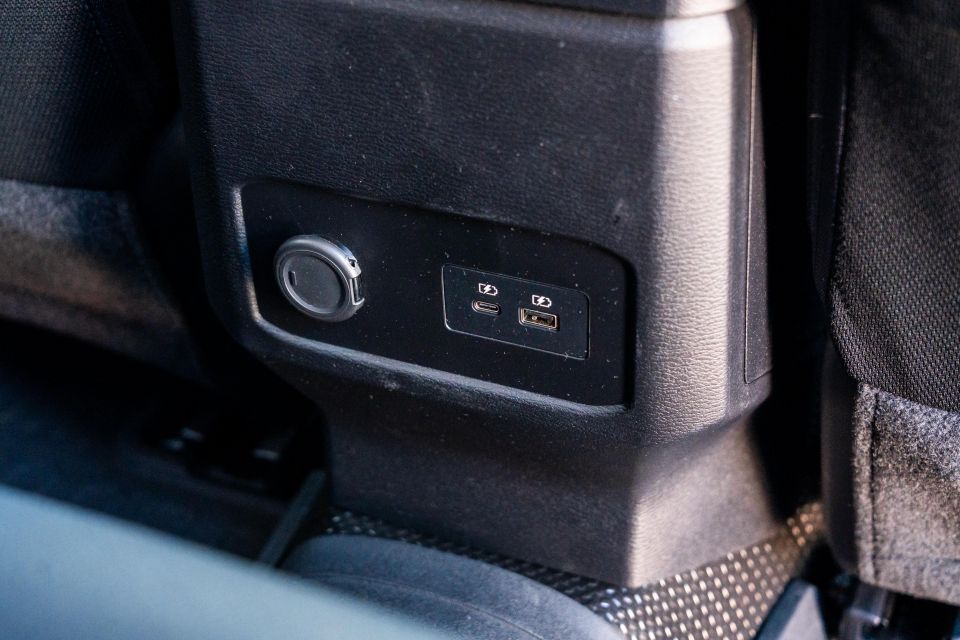
Rear seat space has improved compared to the old Triton.
Rather than feeling awkwardly perched on the rear bench, adults sitting back there will be able to get their boots under the front seats and stretch out a bit more. It’s still not on par with the Ranger – nor the GWM Cannon Alpha – and the rising window line makes things more claustrophobic for young kids.
The roof-mounted air-conditioning system in the Triton carries over for 2024, pumping air from the front of the cabin into the rear. It’s better than having no vents, but isn’t as neat as a set of vents in the middle of the vehicle like you get in rivals.
One USB-A and one USB-C port are present, along with a 12V slot. The central armrest also folds down to keep warring kids apart.
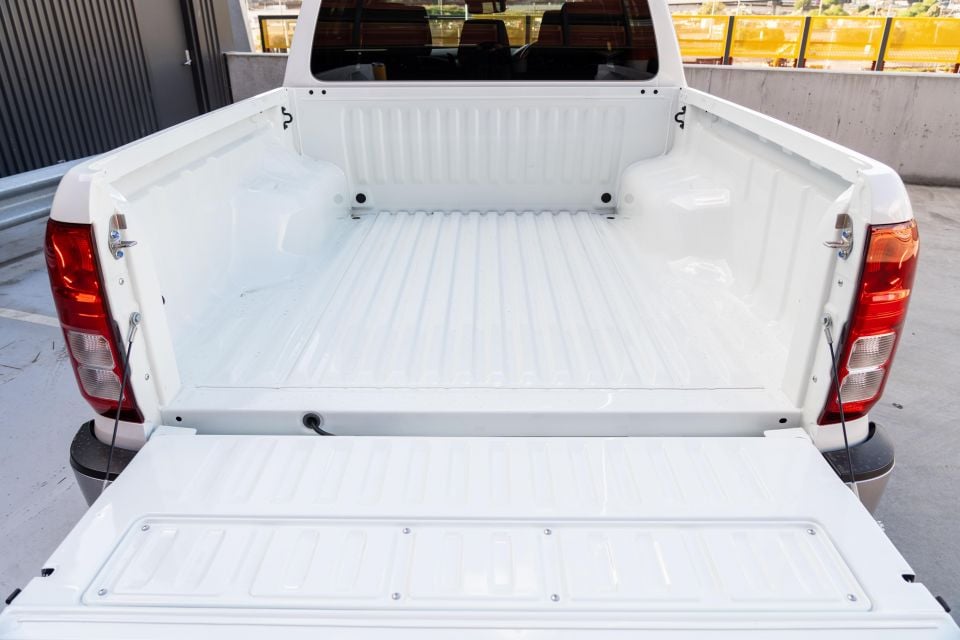
A trio of top tether points feature, along with two ISOFIX points. As is always the case with utes, fitting child seats can be a nail-breaking and swear-inducing process because of the bulkhead position.
As for the tray? It’s unlined in the GLX+, which means you may need to spend more on a mat, or a proper bed liner depending on how you plan to use it.
The tray for Dual Cab versions has grown 35mm in length to 1555mm, with width quoted at 1545mm. It’s 526mm deep, and there’s 1135mm between the arches. A full-size spare wheel lives under the tray.
Mitsubishi hasn’t followed the Ford Ranger to offering a six-cylinder engine, but it does have more power and torque than before thanks to an extra turbocharger.
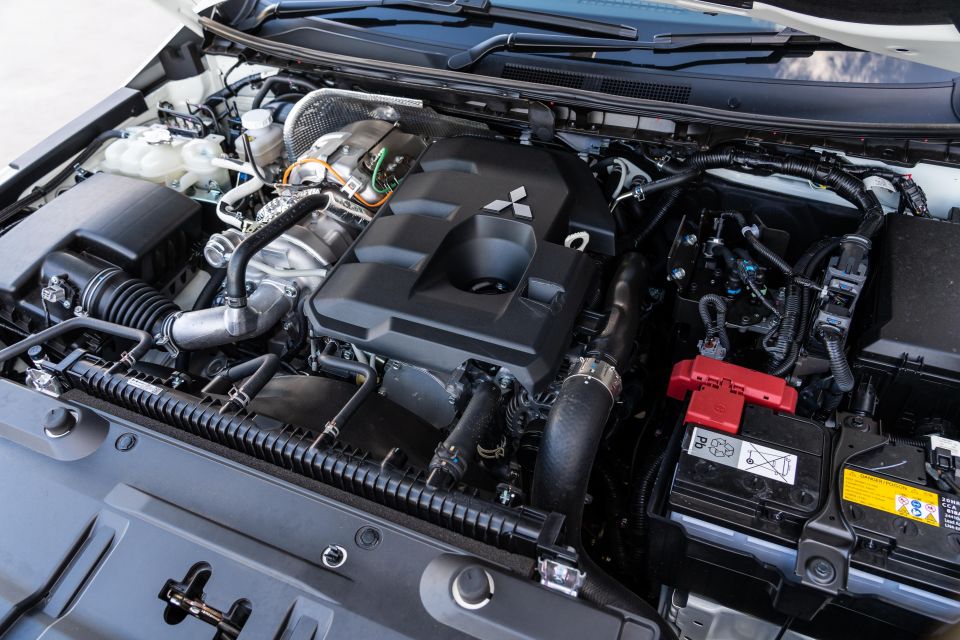
| Technical Specifications | Mitsubishi Triton 2.4 4N16 |
|---|---|
| Engine | 2.4L 4cyl bi-turbo diesel |
| Power | 150kW (3500rpm) |
| Torque | 470Nm (1500-2750rpm) |
| Transmission | 6-speed automatic |
| Driven wheels | 4WD with low-range |
| Weight | 2000-2170kg (kerb) |
| Fuel economy (claim) | 7.5-7.7L/100km |
| Fuel tank size | 80 litres |
| Gross vehicle mass | 3070kg (2WD) to 3200kg (4WD) |
| Gross combination mass | 6210kg (2WD) to 6250kg (4WD) |
| Payload | 1030kg (GSR) to 1110kg (GLX+ Club Cab) |
| Braked towing | 3500kg |
To see how the Mitsubishi Triton lines up against the competition, check out our comparison tool.
This is a big step forward from the last Triton on the road from the second you fire up the updated engine.
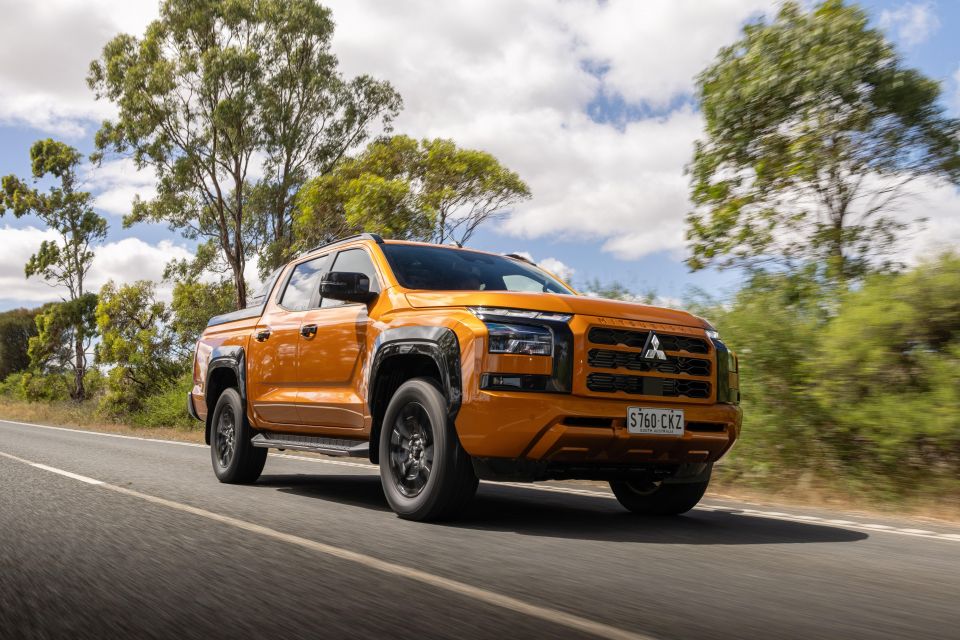
It’s quieter and smoother at idle inside, with a muted grumble that’s actually quite refined by ute standards. All the controls are much lighter than before, so pulling out of tight parking spots is easier than it used to be – which won’t worry some buyers, but will make the growing crowd of people using utes as family cars happy.
The new engine is happy enough around town, with enough torque down low in the rev range to feel punchy away from the lights with nothing in the tray.
The fact the much older Pajero Sport gets an eight-speed automatic and the Triton persists with a six-speed unit is hard to understand, but the transmission slurs through the ratios smoothly at a cruise. It’s also decisive when you put your foot down, although you do get quite a bit of noise as the revs rise.
Unlike more expensive versions of the Triton, the GLX+ doesn’t have Super Select II four-wheel drive. That means it can’t be driven on sealed surfaces in any mode aside from 2H, which is less secure when towing… or when the road is wet, given how lively unladen utes with all-terrain tyres can be.
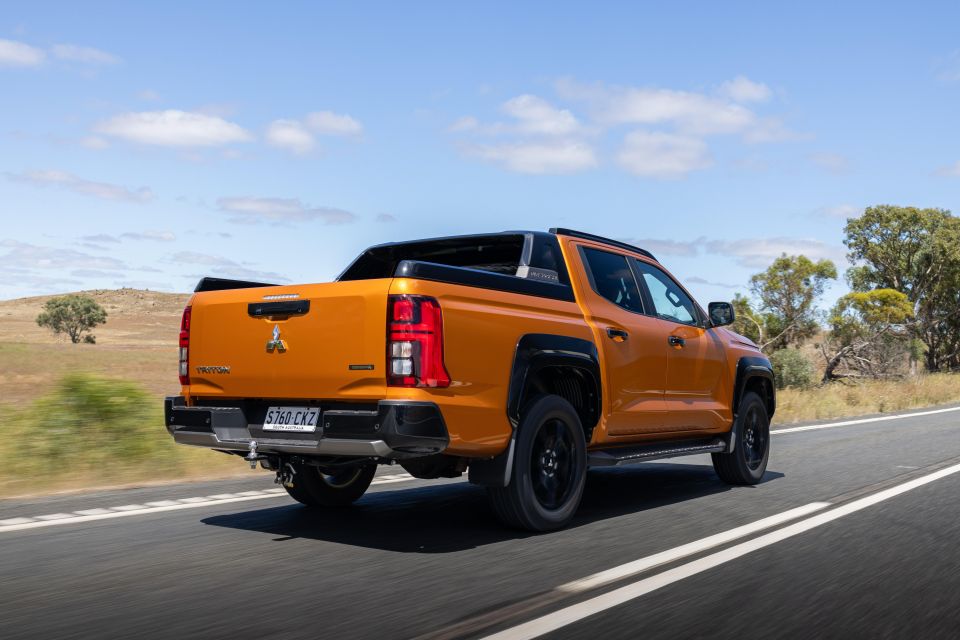
Ride quality is meaningfully better here than in the old Triton around town. It’s still obviously a ladder frame vehicle, but sharp bumps and potholes don’t shudder through the structure like they used to.
There’s just an extra degree of compliance built in when the tray is empty, as you’d expect in a heavily reworked car.
The main complaint about the Triton around town is its driver monitoring system, which just doesn’t shut up. Look at the touchscreen, and it chimes. Lean your head to see around the windscreen pillars, and it chimes. Rest your hand on the top of the wheel at a set of lights, and it chimes.
It’s hypersensitive, and requires diving through menus in the driver display to switch off every time you turn the car on – how’s that for distracting?
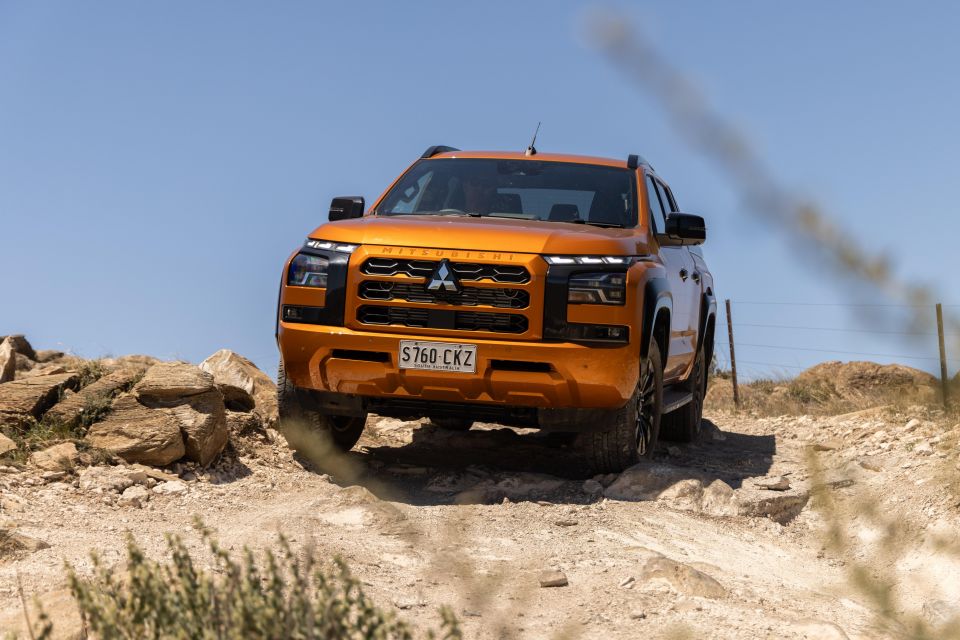
The new technology isn’t all bad. On the highway, the standard adaptive cruise control smartly maintains a gap to the vehicle in front, which takes the load off on long drives.
It does fall short of offering a full highway driving assistant, which would take a more active role in keeping you between the white lines – something a Ranger or D-Max will do.
Old-school owners won’t care, but it’s disappointing this brand new model is already behind the curve.
At least Mitsubishi’s lane-keeping assist doesn’t jump at shadows like in some rivals, and the standard surround view camera does come in handy in tight spaces.
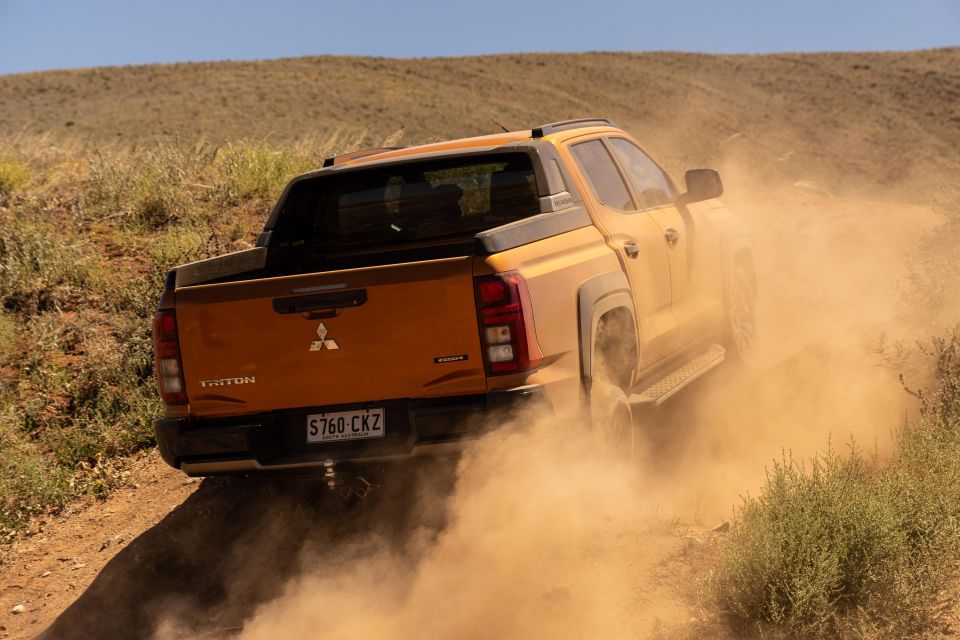
On the highway, even with the heavy-duty rear suspension standard on the GLX and GLX+ the new Triton is relatively settled.
It’s also nice and quiet, with less wind and road noise in the cabin than before. Rather than having to crank up the stereo to drown out the outside world, it’s easier to have a conversation in the Triton when you’re doing 100km/h.
The extra grunt on offer from the updated engine makes for a more confident car if you’re overtaking at highway speeds, although it’s now aligned with its four-cylinder rivals rather than a class leader.
Also worth noting is the ride here is firmer than the more expensive GLS or GSR, which is in keeping with this car’s billing as a workhorse instead of a posh daily driver.
On test is the mid-spec Triton GLX+ in 4×4 dual-cab ute guise.
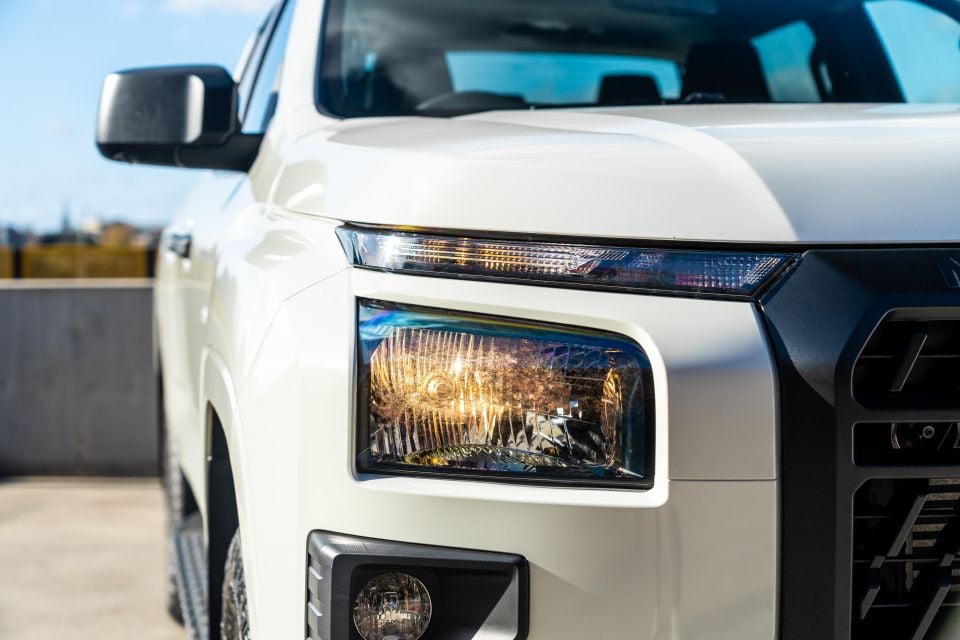

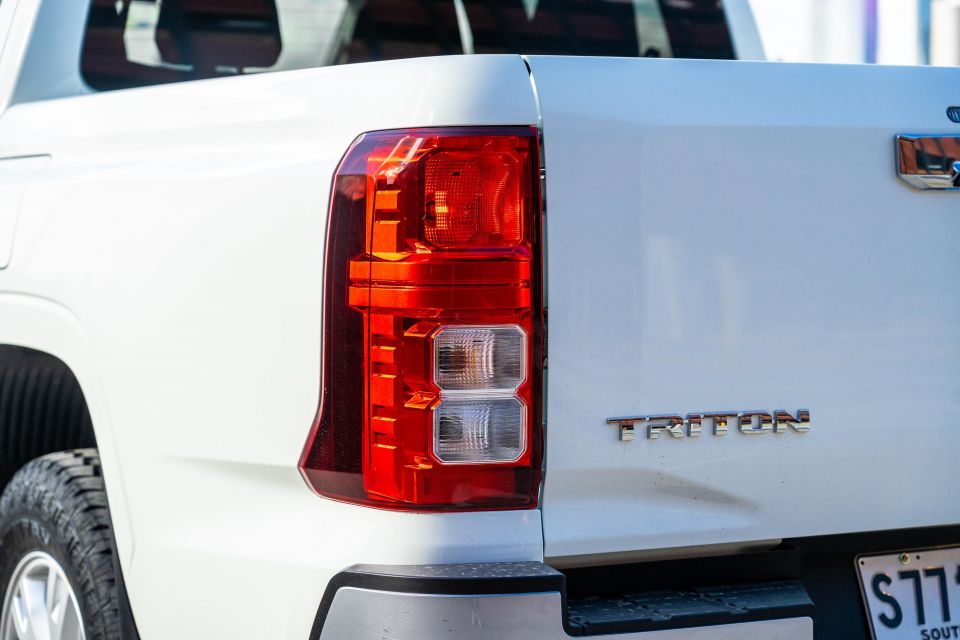
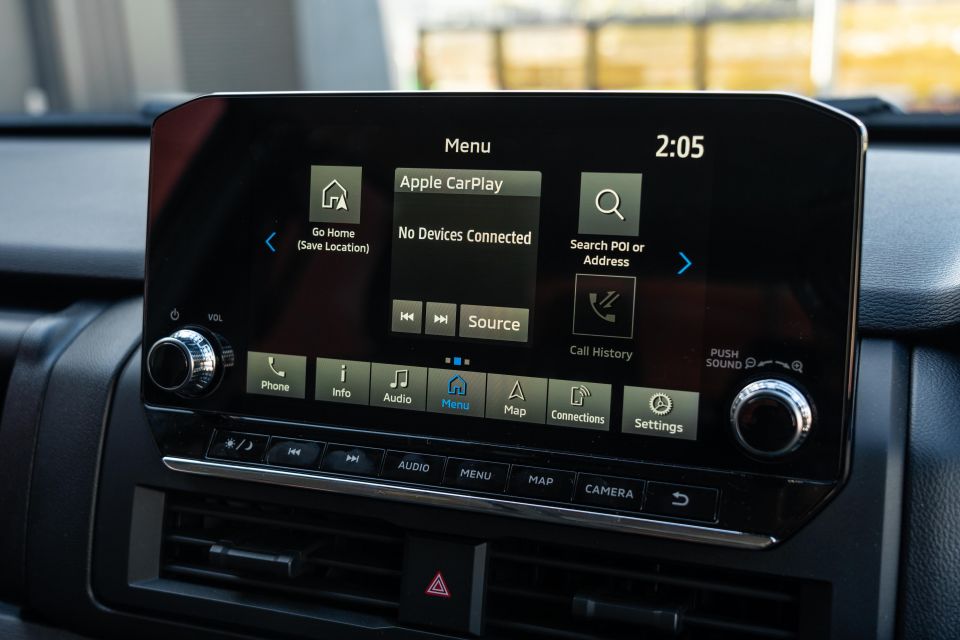
Triton GLX highlights:
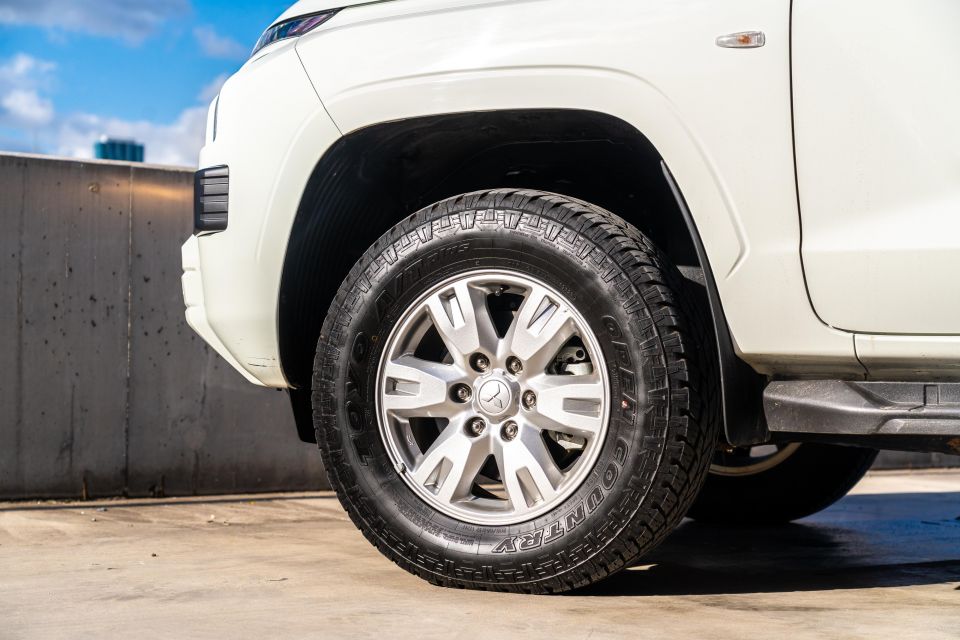

Where expert car reviews meet expert car buying – CarExpert gives you trusted advice, personalised service and real savings on your next new car.
Triton GLX+ adds:
The Mitsubishi Triton has a five-star ANCAP safety rating based on testing carried out in 2024.
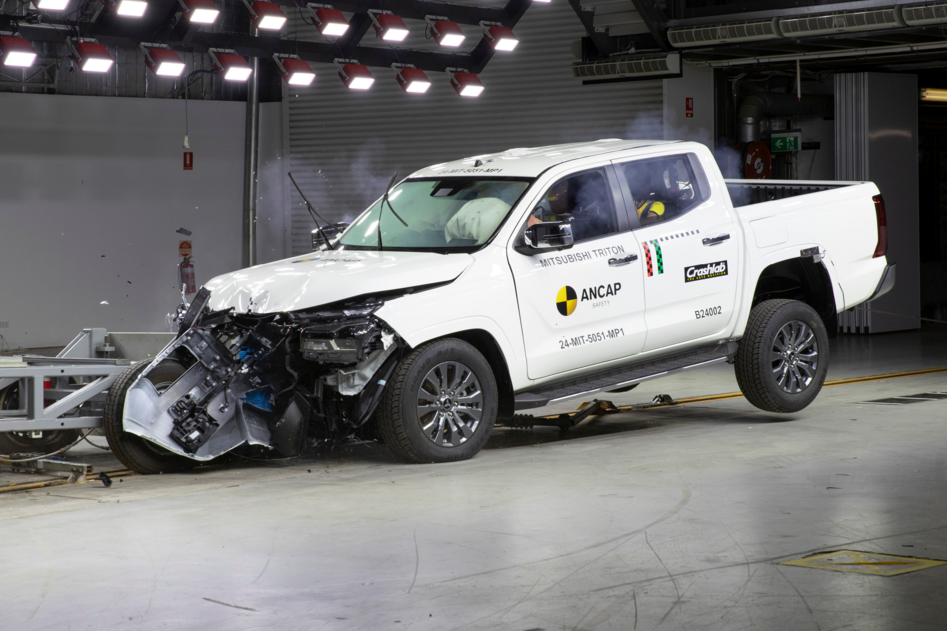
It scored 86 per cent for adult occupant protection, 89 per cent for child occupant protection, 74 per cent for vulnerable road user protection, and 70 per cent for safety assist.
Standard safety equipment includes:
GLX+ and up get a surround-view camera and rear AEB.
The Mitsubishi range is backed by Australia’s longest new car warranty, provided you service within the dealer network.
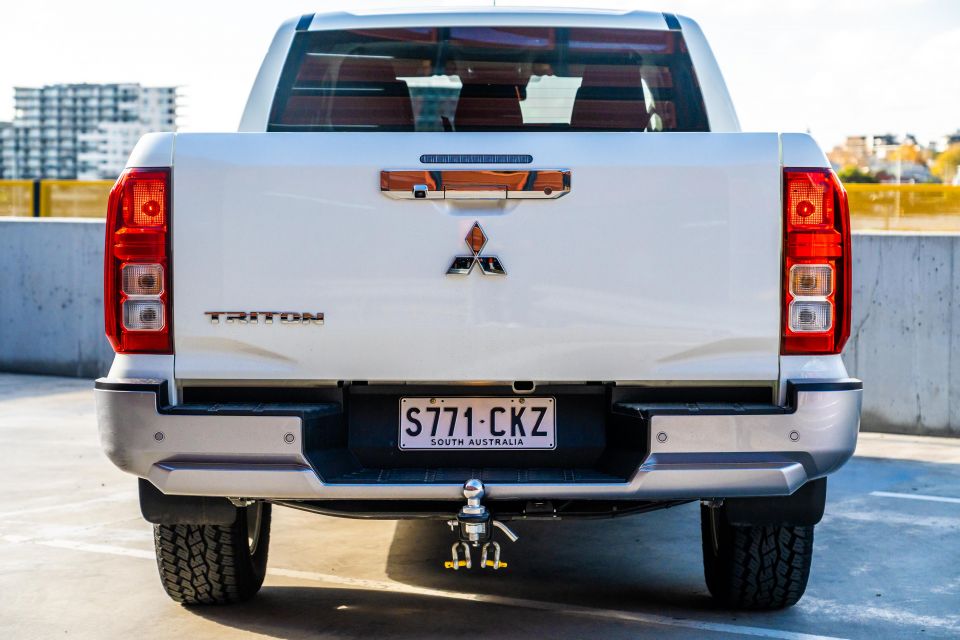
| Ownership Program | Mitsubishi Triton |
|---|---|
| Warranty | 5 years or 100,000km – standard 10 years or 200,000km – extended |
| Service interval | 12 months or 15,000km |
| Capped price servicing | 10 years |
| Average capped-price service cost | $669 |
| Total capped-price service cost | $6690 (10 years) |
The Triton GLX+ is a mixed bag.
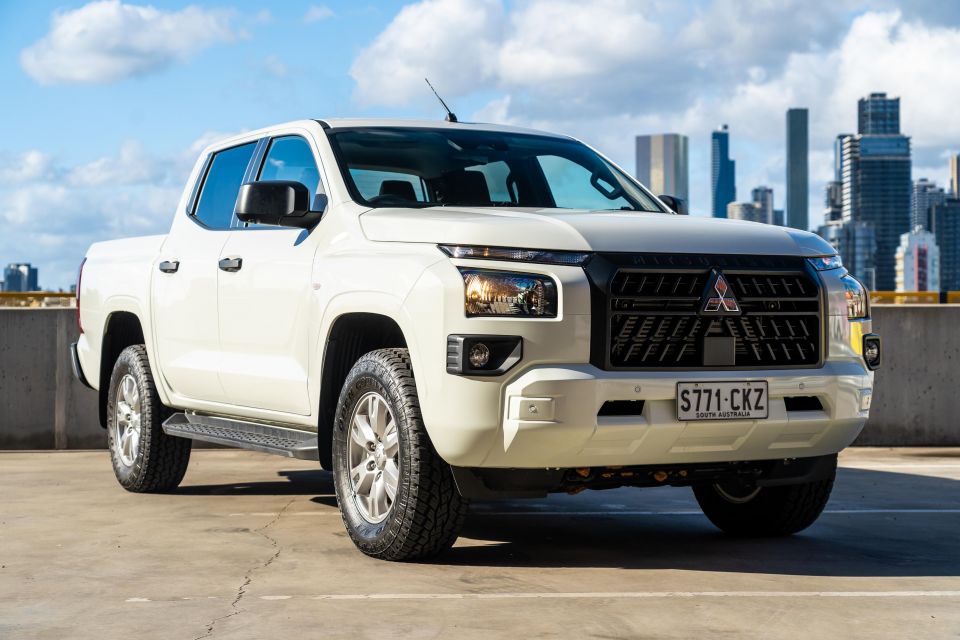
On the plus side, it drives with more polish than its predecessor thanks to the more powerful engine, as well as a suspension and steering tune more focused on delivering a comfortable ride in town.
It also has a full suite of driver assists, and technology like automatic stop/start… we just wish that technology was better tuned.
The cumbersome start/stop undermines the newfound refinement in the city, and the driver monitoring is up with Kia and Hyundai’s speed limit chime in the competition for the most annoying “assistance” system on offer in Australia.
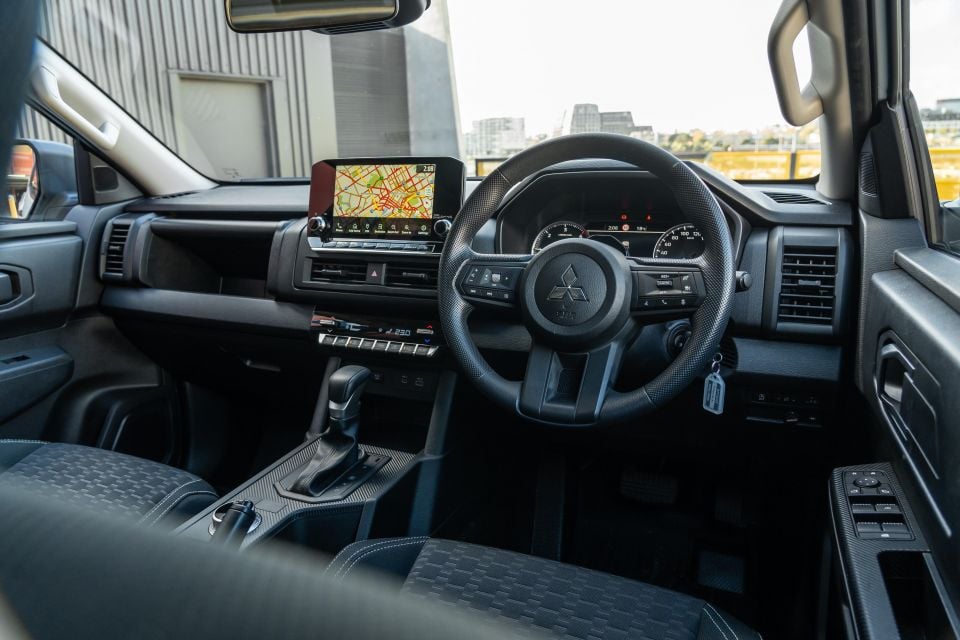
There’s also a value question that needs to be asked here, which wasn’t previously the case in the Triton. Our GLX+ tester looked and felt like a fleet special inside, which is stark when you consider what GWM throws into a Cannon Alpha for less money.
Yes, the Triton has an established name and drives with more polish – GWM has work to do on towing, carrying a load, and off-roading in our experience – but Mitsubishi can’t trade on the fact it drastically undercuts a Ranger anymore because it’s not the only brand occupying that space.
If you’re upgrading from an old Triton, the new one won’t disappoint. But it pays to drive some of the car’s upstart challengers if the badge isn’t important to you, because the ute game has changed.

Click the images for the full gallery
MORE: Buy a Mitsubishi Triton MORE: Everything Mitsubishi Triton
Where expert car reviews meet expert car buying – CarExpert gives you trusted advice, personalised service and real savings on your next new car.
Scott Collie is an automotive journalist based in Melbourne, Australia. Scott studied journalism at RMIT University and, after a lifelong obsession with everything automotive, started covering the car industry shortly afterwards. He has a passion for travel, and is an avid Melbourne Demons supporter.


Max Davies
6 Minutes Ago


Damion Smy
8 Hours Ago
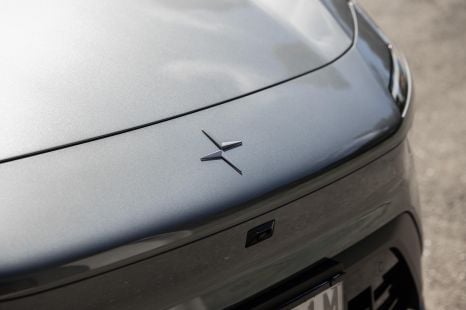

Damion Smy
9 Hours Ago
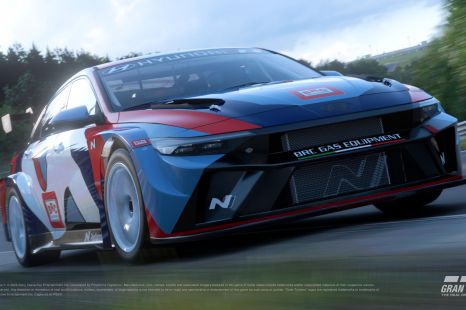

Damion Smy
11 Hours Ago
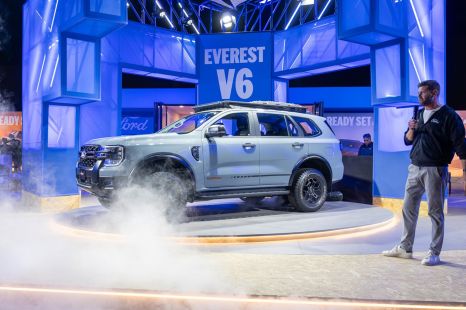

Damion Smy
13 Hours Ago


CarExpert.com.au
14 Hours Ago